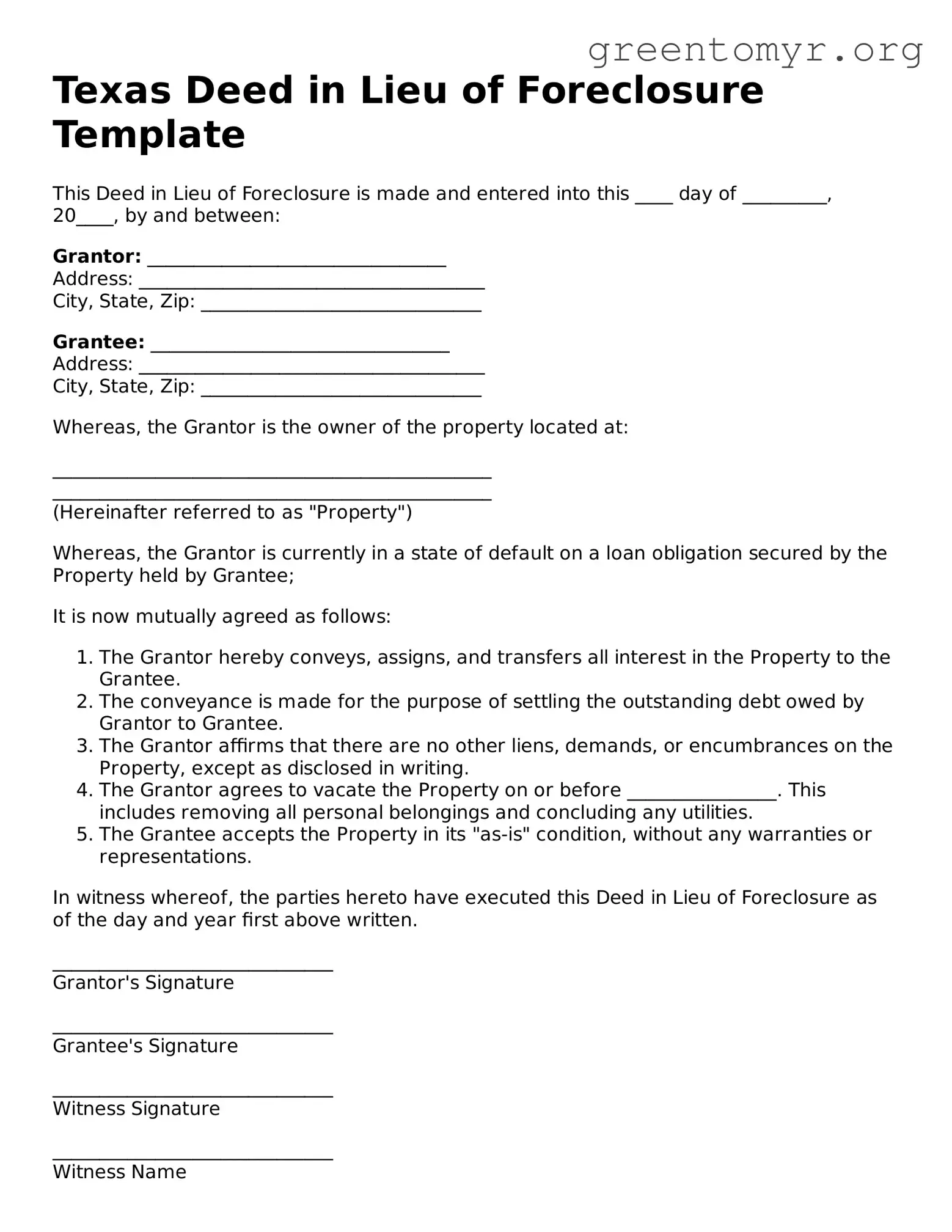Texas Deed in Lieu of Foreclosure Template
This Deed in Lieu of Foreclosure is made and entered into this ____ day of _________, 20____, by and between:
Grantor: ________________________________
Address: _____________________________________
City, State, Zip: ______________________________
Grantee: ________________________________
Address: _____________________________________
City, State, Zip: ______________________________
Whereas, the Grantor is the owner of the property located at:
_______________________________________________
_______________________________________________
(Hereinafter referred to as "Property")
Whereas, the Grantor is currently in a state of default on a loan obligation secured by the Property held by Grantee;
It is now mutually agreed as follows:
- The Grantor hereby conveys, assigns, and transfers all interest in the Property to the Grantee.
- The conveyance is made for the purpose of settling the outstanding debt owed by Grantor to Grantee.
- The Grantor affirms that there are no other liens, demands, or encumbrances on the Property, except as disclosed in writing.
- The Grantor agrees to vacate the Property on or before ________________. This includes removing all personal belongings and concluding any utilities.
- The Grantee accepts the Property in its "as-is" condition, without any warranties or representations.
In witness whereof, the parties hereto have executed this Deed in Lieu of Foreclosure as of the day and year first above written.
______________________________
Grantor's Signature
______________________________
Grantee's Signature
______________________________
Witness Signature
______________________________
Witness Name
STATE OF TEXAS
COUNTY OF ___________________
Before me, the undersigned authority, on this day personally appeared _________________________________, known to me to be the person whose name is subscribed to this instrument, and acknowledged to me that they executed the same for the purposes and considerations therein expressed.
Given under my hand and seal this ____ day of ___________, 20__.
______________________________
Notary Public in and for the State of Texas
My Commission Expires: ________________
